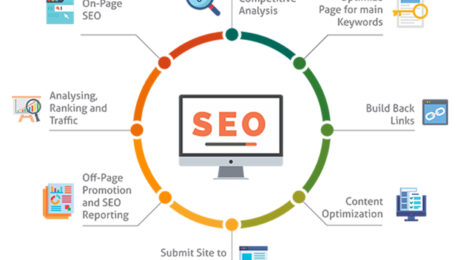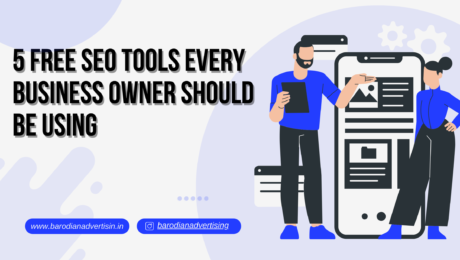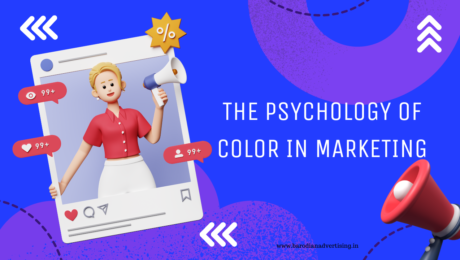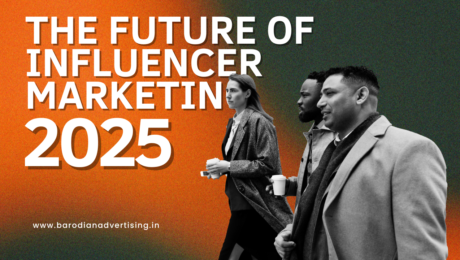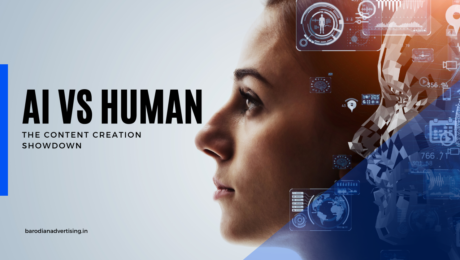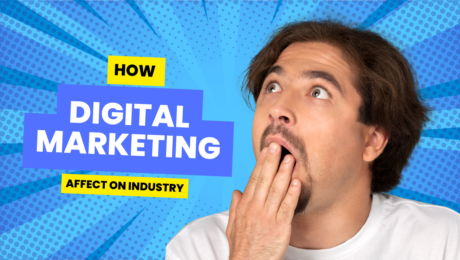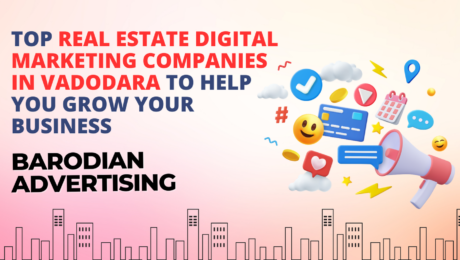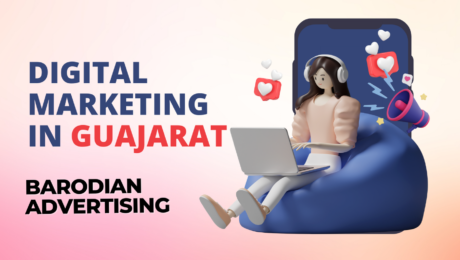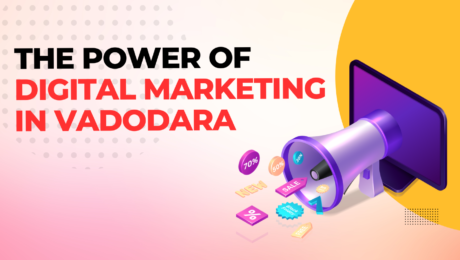In today’s digital landscape, a strong online presence is critical for businesses of all sizes. Search Engine Optimization (SEO) plays a major role in that presence, influencing how easily potential customers can find your website. But SEO can feel complex, especially for business owners without a background in marketing.
The good news? There are fantastic free SEO tools available to help you optimize your website and climb search engine rankings. Here are 5 essential free tools every business owner should be using:
-
Google Search Console (GSC): Offered directly by Google, GSC is a treasure trove of information about your website’s health from an SEO perspective. It identifies crawl errors, broken links, and mobile usability issues. It also provides valuable insights into how users find your website through search queries, allowing you to refine your content strategy for better visibility.
-
Google Analytics (GA): Understanding your website traffic is crucial for SEO success. GA dives deep into user behavior, revealing demographics, traffic sources, and most popular content. This data helps you identify which keywords are driving traffic, what content resonates with your audience, and areas for improvement. By analyzing bounce rates and time spent on pages, you can pinpoint sections that need optimization to keep users engaged.
-
Google Keyword Planner: Keyword research is the foundation of any SEO strategy. Keyword Planner, again from Google, helps you discover relevant keywords that users are searching for. It provides search volume estimates and competition levels, allowing you to target keywords that are both high-potential and achievable. By incorporating these keywords into your website content and meta descriptions, you increase your chances of showing up in search engine results pages (SERPs) for relevant searches.
-
Answer the Public (ATP): This free tool goes beyond simple keyword research. It taps into user search queries, providing a visual map of questions, prepositions, and comparisons people use related to your topic. By understanding these “long-tail” keywords and the different ways users might be phrasing their searches, you can create content that directly addresses their needs and intent. This not only improves SEO but also positions you as a trusted authority in your field.
-
Yoast SEO (for WordPress users): If your website is built on WordPress, Yoast SEO is a must-have plugin. It acts as your on-page optimization assistant, guiding you through the process of optimizing your content for target keywords. Yoast analyzes your content’s readability, suggests internal linking opportunities, and helps craft compelling meta descriptions and title tags – all crucial elements for strong SEO.
Remember, SEO is an ongoing process. By consistently using these free tools and implementing their insights, you’ll be well on your way to improving your website’s ranking, attracting more organic traffic, and ultimately, growing your business.
Bonus Tip: While not exactly a tool, staying up-to-date with the latest SEO trends is essential. Google’s algorithms are constantly evolving, so following SEO industry publications and blogs can help you adapt your strategy for continued success.
Here are some additional points to consider when using these free SEO tools:
- Focus on quality content: SEO is not just about keywords. It’s about creating high-quality content that is informative, engaging, and relevant to your target audience. Google rewards websites that provide value to users, so make sure your content is well-written, informative, and up-to-date.
- Build backlinks: Backlinks are links from other websites to your website. They act as a vote of confidence in your content and can significantly improve your website’s authority and ranking in search results. There are many ways to build backlinks, such as guest blogging, creating infographics, and participating in online communities.
- Mobile-friendliness: More and more people are searching the web from their mobile devices. Google prioritizes mobile-friendly websites in search results, so make sure your website is responsive and easy to navigate on all devices.
- Be patient: SEO is a long-term strategy. It takes time and effort to see results. However, by consistently using these free tools and following SEO best practices, you can gradually improve your website’s ranking and organic traffic.
Color psychology explores the fascinating link between colors and human behavior. In marketing, this translates to understanding how colors influence consumer perception, emotions, and ultimately, purchasing decisions. Studies suggest that up to 90% of snap judgments about products can be based on color alone [Source: Help Scout]. That’s a powerful statistic, highlighting how color can be a game-changer in your marketing strategy.
Emotional Influence
Different colors evoke distinct emotions. Here’s a breakdown of some common color associations:
- Red: Excitement, passion, urgency, but also danger or anger. Think fast-food chains or sale signs.
- Orange: Playfulness, warmth, enthusiasm. Great for energy drinks or children’s products.
- Yellow: Happiness, optimism, creativity. Ideal for promoting innovative products or summer sales.
- Green: Growth, nature, peace, stability. Often used for organic or eco-friendly brands.
- Blue: Trust, security, calmness. A popular choice for banks, tech companies, and healthcare providers.
- Purple: Luxury, sophistication, wisdom. Think high-end products or beauty brands.
Beyond Basics: Context is Key
It’s important to remember that color psychology isn’t a rigid formula. Cultural nuances and personal experiences can influence how people perceive colors. For instance, red might symbolize good luck in some cultures. Additionally, the meaning of a color can shift depending on the context. A pastel blue might evoke tranquility, while a bold blue can project strength.
Building Your Brand Identity
The key lies in using color psychology strategically to build a brand identity that resonates with your target audience. Consider these factors:
- Brand Personality: What emotions and values do you want your brand to represent? Choose colors that align with that image. For example, a tech startup aiming to convey innovation and cutting-edge thinking might use a combination of cool blues and bright oranges. A natural food brand focused on health and sustainability might opt for earthy tones of green and brown.
- Target Audience: Who are you trying to reach? Research color preferences within your demographic. Teenagers might respond well to bold, energetic colors, while older adults might gravitate towards more subdued and sophisticated tones. Understanding your target audience’s color preferences allows you to tailor your marketing materials to be more visually appealing and impactful.
- Competitive Landscape: Analyze how your competitors are using color and consider complementary or contrasting approaches. If your competitors are all using shades of blue, you might opt for a pop of green or yellow to make your brand stand out. However, if you’re in a market where bright colors are the norm, using a more muted palette could give your brand a more sophisticated air.
Putting Color to Work
Here are some ways to integrate color psychology into your marketing:
- Logos and Branding: Your logo and brand colors set the tone for your entire marketing strategy. Choose colors that encapsulate your brand essence. A luxury jewelry brand might use black and gold to convey elegance and sophistication, while a children’s toy company might use bright and playful colors to appeal to their target audience.
- Website and Marketing Materials: The colors on your website, social media pages, and advertisements should reinforce your brand identity and evoke the desired emotions in your audience. For example, a spa promoting relaxation might use calming blues and greens on their website, while a fitness center might use more energetic colors like red and orange to motivate potential customers.
- Product Packaging: Color plays a crucial role in attracting attention on shelves. Consider your target audience and the message you want to convey when designing product packaging. A brand targeting young children might use bright, cartoonish characters on their packaging, while a brand targeting health-conscious adults might use clean lines and natural colors to emphasize the healthy ingredients of their product.
Influencer marketing has exploded in recent years, with brands scrambling to partner with social media stars. But as consumers become savvier and platforms evolve, the future of influencer marketing is poised for a shift. Here’s a glimpse into what’s on the horizon:
1. Authenticity Reigns Supreme:
Gone are the days of inauthentic product placements. Consumers crave genuine connections and trust the recommendations of influencers they perceive as relatable. The future will see a rise in micro-influencers – everyday people with smaller but highly engaged followings – who resonate more deeply with their audience. Think of them as the friends you trust for honest recommendations, rather than distant celebrities.
2. Content Takes Center Stage:
Engagement will become the new metric of success. Forget inflated follower counts; brands will prioritize influencers who can create compelling content that sparks conversations and drives conversions. This could include interactive stories, educational tutorials, or user-generated content campaigns. Influencers who excel at storytelling and content creation will be especially valuable, as they can craft narratives that captivate audiences and seamlessly integrate brand messages.
3. The Rise of Niche Communities:
Broadcasting to the masses is losing its effectiveness. The future lies in targeted marketing through niche communities. Influencers who cater to specific interests or demographics will hold immense power, allowing brands to reach highly relevant audiences. A beauty influencer targeting skincare for mature audiences, for example, will be far more valuable to a brand selling anti-aging products than a celebrity with a broad but general following.
4. Transparency and Disclosure:
Consumers are demanding transparency. Clear and honest disclosure of sponsored content will be crucial. Platforms might introduce built-in labeling features, and influencers who prioritize integrity over inauthentic promotion will thrive. Building trust with their audience is essential for influencer longevity, and transparency goes a long way in achieving that.
5. The Power of Long-Term Partnerships:
Forget fleeting brand deals. Long-term partnerships built on mutual trust will be key. Brands will seek influencers who genuinely align with their values and can create sustained brand advocacy. This allows for deeper audience connections and more impactful campaigns. Think of it as a brand ambassador program, where influencers become true partners in representing the brand message.
6. The Rise of Influencer Marketing Platforms:
Matching brands with the perfect influencers will become easier with specialized platforms. These platforms will leverage data and analytics to ensure optimal campaign performance and streamline the influencer marketing process. Imagine a service that connects a brand selling organic baby food with a network of mommy bloggers who espouse healthy living principles – a perfect match for an impactful campaign.
7. The Integration of AI and AR:
Artificial intelligence (AI) will play a role in influencer selection, analyzing audience demographics and engagement patterns. Additionally, expect to see augmented reality (AR) integrated into influencer marketing, allowing for more interactive and immersive experiences. Imagine a makeup tutorial where viewers can virtually try on the products a beauty influencer is using, or a furniture company that allows users to virtually place furniture pieces in their homes using AR technology.
8. The Measurement of True Impact:
Brands will move beyond vanity metrics like likes and follower counts. Measuring true campaign impact will be vital. This could involve website traffic, sales conversions, brand sentiment analysis, and customer engagement data. Advanced analytics tools will be crucial for measuring the effectiveness of influencer marketing campaigns and ensuring a return on investment.
9. The Rise of Employee Advocacy:
Employees can be powerful brand ambassadors. Companies will increasingly leverage their workforce for authentic influencer marketing, encouraging employees to share their brand experiences and connect with potential customers on social media. Empowering employees to share their passion for the brand they work for can be a powerful marketing tool, fostering a sense of community and trust with potential customers.
10. The Power of Social Commerce:
Social media platforms are becoming one-stop shops for discovery and purchase. Influencer marketing will seamlessly integrate with social commerce features, allowing consumers to buy products directly within the influencer’s content. Imagine seeing a fashion influencer showcase a new outfit, and with a single click, being able to purchase the exact same pieces directly from the influencer’s post. This frictionless shopping experience will revolutionize influencer marketing and e-commerce.
The future of influencer marketing is all about building genuine connections, prioritizing content, and fostering long-term brand partnerships. By embracing these trends, brands can leverage the power of influencers to reach engaged audiences and achieve lasting success. Influencers who can adapt to this evolving landscape and deliver creative, authentic content that resonates with their audience will be the true winners in the influencer marketing game.
The digital age has been a constant dance between innovation and tradition. Nowhere is this more evident than in the realm of content creation. Content, the lifeblood of any online presence, is being produced at an ever-increasing rate. But who’s behind the keyboard (or generating the code)? We’ve got a fascinating showdown brewing: AI, the tech wunderkind, versus the human content creator, a seasoned veteran with a storyteller’s heart.
In one corner, we have the Artificial Intelligence (AI) champion. Armed with advanced algorithms, unparalleled data analysis capabilities, and lightning-fast processing power, AI is a content creation machine. It can churn out blog posts, social media content, product descriptions, and even scripts at a rate that would leave even the most prolific human writer breathless. AI can sift through mountains of data, identify trends, and craft content that’s perfectly optimized for search engines. Need local SEO for your bakery? AI can whip up a targeted blog post highlighting your delicious croissants faster than you can say “content marketing strategy.”
But before we crown AI the undisputed champion, let’s not forget the human contender. Humans bring a unique blend of creativity, emotional intelligence, and storytelling prowess to the table. They can craft content that resonates with audiences on a deeper level, weaving in humor, cultural references, and a certain “je ne sais quoi” that AI just can’t replicate. A human writer can tap into current events, craft narratives that evoke emotions, and use humor to keep readers engaged. They can understand the nuances of language and cultural references that can make content truly connect.
So, who wins this epic content creation battle? Here’s the surprising twist: there is no single victor. AI and humans are more like teammates than rivals. When combined, they can create content that’s both informative and engaging. AI can handle the heavy lifting of research, data analysis, and content formatting, freeing up human creators to focus on the magic – the creative spark, the emotional connection, and the art of storytelling.
This powerful duo can revolutionize your content marketing strategy. Imagine AI generating a well-researched blog post outline, complete with relevant keywords and trending topics. Then, a human writer takes the reins, crafting a compelling narrative that grabs the reader’s attention and leaves them wanting more. This is the future of content creation – a future where AI and humans work together to create content that not only informs but also inspires, entertains, and connects with audiences on a meaningful level.
Stay tuned as we delve deeper into the strengths and weaknesses of each contender. We’ll explore how to leverage AI tools to streamline your workflow and empower human creators to unleash their full creative potential. Together, we’ll navigate the exciting world of AI-powered content creation and discover how this dynamic duo can take your content marketing strategy from good to great.
The rise of the internet and digital technologies has had a seismic impact on practically every aspect of our lives, and business is no exception. Traditional marketing methods, once the cornerstone of brand building and customer acquisition, have undergone a dramatic transformation. In its place, digital marketing has emerged as a powerful force, fundamentally altering how industries operate and interact with their audiences.
Reaching a Global Audience: One of the most significant effects of digital marketing is the ability to target a wider audience than ever before. Gone are the geographical limitations of print advertising or local television commercials. Businesses can now leverage social media platforms, search engine optimization (SEO), and content marketing to reach potential customers across the globe. This opens doors for industries like e-commerce, travel and tourism, and education, allowing them to tap into a vast international market.
Enhanced Customer Engagement: Digital marketing fosters a two-way communication channel between businesses and their customers. Social media platforms provide a space for direct interaction, enabling brands to build relationships, address concerns, and gather valuable customer feedback. Email marketing allows for personalized communication, nurturing leads and fostering brand loyalty. This level of engagement empowers industries like healthcare, finance, and professional services to build trust and establish themselves as thought leaders in their respective fields.
Data-Driven Decisions: A hallmark of digital marketing is its measurability. Unlike traditional marketing campaigns, where the effectiveness can be difficult to quantify, digital marketing provides a wealth of data and analytics. Businesses can track website traffic, social media engagement, and conversion rates, allowing them to measure the success of their campaigns and make data-driven decisions for optimization. This empowers industries like retail, media and entertainment, and non-profit organizations to allocate resources effectively and maximize their return on investment (ROI).
A Level Playing Field: Digital marketing has democratized the marketing landscape. Small businesses and startups can now compete with established players by leveraging the power of digital tools. Social media marketing, content marketing, and search engine optimization can be implemented with relatively low costs, allowing smaller businesses to reach a targeted audience and make their mark in the industry. This fosters innovation and disrupts traditional hierarchies, creating a more dynamic and competitive business environment.
The Need for Constant Evolution: The digital marketing landscape is constantly evolving. New technologies and platforms emerge at a rapid pace, and consumer behavior online continues to shift. Businesses must be adaptable and willing to embrace new trends to stay ahead of the curve. This constant evolution keeps industries on their toes, requiring them to invest in ongoing training and development for their marketing teams to ensure they possess the necessary skills to navigate the ever-changing digital landscape.
In conclusion, digital marketing has revolutionized the way industries operate. From global reach and enhanced customer engagement to data-driven decision making and a more level playing field, the impact of digital marketing is undeniable. As technology continues to evolve, businesses that embrace digital marketing and adapt their strategies will be well-positioned to thrive in the ever-changing digital age.
Digital Marketing Companies in Gujarat: A Guide to Choosing the Right One
Gujarat is a state in western India that is home to a thriving digital economy. With a large and growing population of internet users, Gujarat is a prime market for businesses of all sizes.
If you’re a business owner in Gujarat, you need to be aware of the importance of digital marketing. In today’s digital age, customers are increasingly turning to online channels to research and purchase products and services. If you want to reach your target audience and grow your business, you need to have a strong digital marketing presence.
There are a number of digital marketing companies in Gujarat that can help you achieve your marketing goals. These companies offer a wide range of services, including:
- Search engine optimization (SEO)
- Pay-per-click (PPC) advertising
- Social media marketing
- Content marketing
- Email marketing
- Website design and development
When choosing a digital marketing company in Gujarat, there are a few things you should keep in mind:
- The company’s experience. How long has the company been in business? Do they have experience working with businesses in your industry?
- The company’s portfolio. Look at the company’s portfolio of work to see examples of their results.
- The company’s team. Who will be working on your account? Make sure the company has a team of experienced and qualified professionals.
- The company’s pricing. How much does the company charge for their services? Make sure the company’s pricing is in line with your budget.
Once you’ve chosen a digital marketing company in Gujarat, you can start working with them to develop and implement a marketing strategy that will help you reach your target audience and grow your business.
The Power of Digital Marketing in Vadodara
In today’s digital age, businesses of all sizes are turning to digital marketing to reach their target audience and grow their business. And Vadodara is no exception.
With a population of over 2 million people, Vadodara is a thriving metropolis with a growing middle class. This makes it an ideal market for businesses of all kinds.
But how can you make sure your business stands out from the competition? The answer is digital marketing.
Digital marketing is the use of online channels to reach your target audience. This includes things like search engine optimization (SEO), pay-per-click (PPC) advertising, social media marketing, and email marketing.
When done correctly, digital marketing can help you:
- Increase brand awareness
- Generate leads
- Drive sales
- Improve customer loyalty
If you’re looking for a way to grow your business in Vadodara, digital marketing is the answer.
Here are some of the benefits of digital marketing in Vadodara:
- Reach a wider audience: Digital marketing allows you to reach a wider audience than traditional marketing methods, such as print and TV advertising. You can target your ads to specific demographics, interests, and even locations.
- Get more leads and sales: Digital marketing can help you generate more leads and sales. By creating compelling content, running targeted ads, and building relationships with your audience, you can encourage people to take action, such as visiting your website, signing up for your email list, or making a purchase.
- Improve customer loyalty: Digital marketing can help you improve customer loyalty. By providing excellent customer service, offering exclusive content and discounts, and engaging with your audience on social media, you can build relationships with your customers and encourage them to do business with you again and again.
If you’re a business in Vadodara, I encourage you to consider using digital marketing to grow your business. With so many benefits to offer, digital marketing is a powerful tool that can help you reach your target audience, generate leads and sales, and improve customer loyalty.
Here are some tips for getting started with digital marketing in Vadodara:
- Set clear goals: What do you want to achieve with digital marketing? Do you want to increase brand awareness, generate leads, or drive sales? Once you know your goals, you can develop a strategy to achieve them.
- Create a strong online presence: Your website is your online storefront. Make sure it’s well-designed, informative, and easy to use. You should also create profiles on social media platforms where your target audience is active.
- Optimize your website for search engines: SEO is the process of improving your website’s ranking in search engine results pages (SERPs). By optimizing your website for relevant keywords, you can make it easier for potential customers to find you online.
- Run paid advertising campaigns: Paid advertising can be a great way to reach a wider audience and generate more leads and sales. You can run ads on search engines, social media platforms, and other websites.
- Track your results: It’s important to track your results so you can see what’s working and what’s not. There are a number of tools you can use to track your progress, such as Google Analytics.
Digital marketing can be a complex and ever-changing field. But by following these tips, you can get started with digital marketing and start seeing results for your business.

